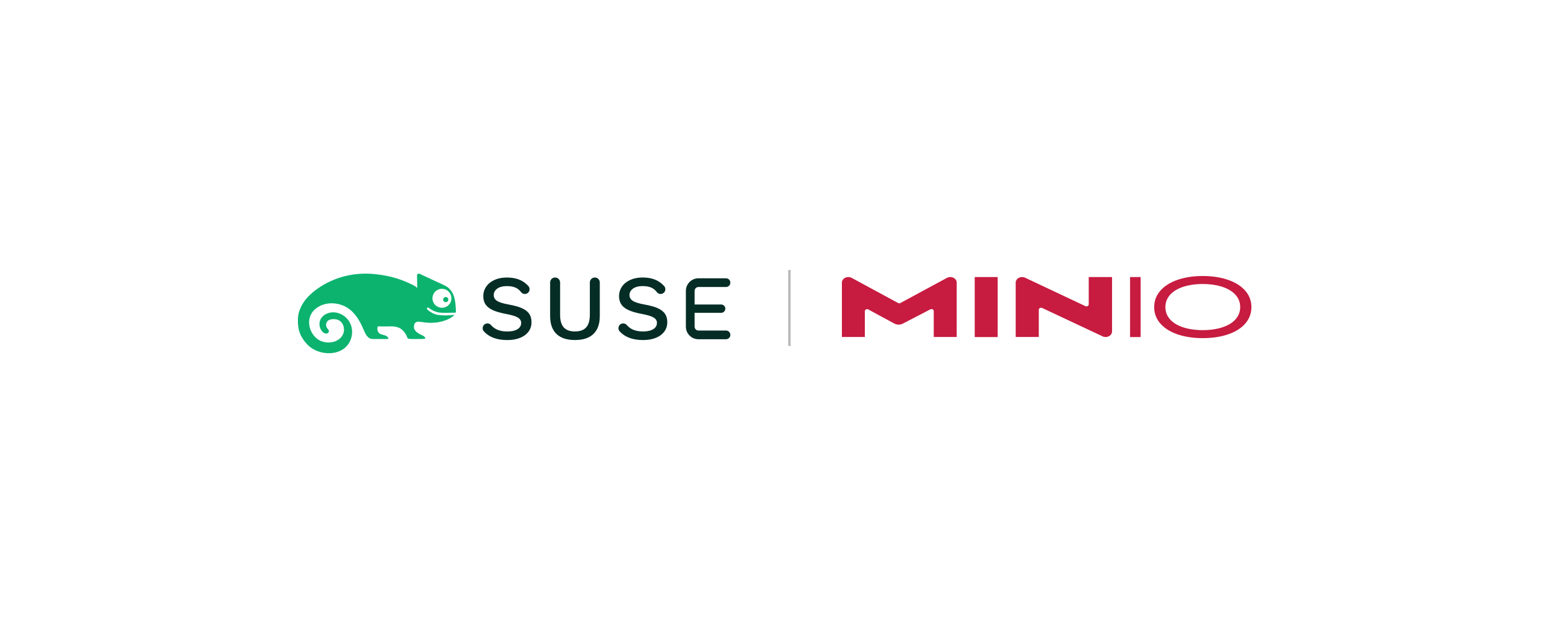SUSE Rancher and MinIO Lock Horns (in a good way...)

Modern enterprises are data-driven and cloud-centric. The latter is a mentality, not a place. The core concepts of the cloud: containerization, orchestration, APIs and automation are the defining characteristics of success for companies in the modern world.
Central to this mentality, indeed, perhaps the defining characteristic, is Kubernetes. Kubernetes initially gained popularity as the go-to platform for deploying and orchestrating containerized workloads on distributed systems, but the platform is proving to deliver much more than orchestration. Kubernetes is rapidly becoming a primary control and management point for enterprises because of its ability to treat infrastructure as code.
Kubernetes was developed to manage containerized workloads and automate application deployment, scaling and provide a software-controlled infrastructure that abstracts away the intricacies of underlying hardware, operating systems and underlying deployment models.
Kubernetes has a particular affinity to one type of storage - object storage. Object storage is cloud-native storage, powered by RESTful APIs and eliminating the burden on the application to handle local storage, making it effectively stateless (as state is with the remote storage system).
Modern applications are built with these principles in mind. Typically, any modern application that deals with some kind of data (logs, metadata, blobs), conforms to the cloud-native design by shipping the state to a relevant storage system.
From the Kubernetes perspective, object stores are not different from any other key value stores or databases. By placing the object store in a container, the storage layer is then reduced to the physical or virtual drives underneath. This point is critical. If the storage layer cannot be reduced to physical or virtual drives, the ability to deliver multi-cloud portability is lost. When it is achieved, workloads and persistent data that live in containers can be deployed, managed and moved between Kubernetes environments. While the RESTful API is enough for Kubernetes, object storage also delivers less operational overhead (chattiness), fewer network limitations, superior security and better manageability.
It makes sense that in such a deployment environment an architect would pair SUSE Rancher with MinIO object storage. Each is inherently multi-cloud, Kubernetes-native and integrated with the leading Kubernetes distributions in the market today.
Rancher is a container management platform built for container-first organizations. Rancher can create Kubernetes clusters with Rancher Kubernetes Engine (RKE) or cloud Kubernetes services, such as GKE, AKS, and EKS. Rancher users can also import and manage existing Kubernetes clusters created using any Kubernetes distribution or installer.
MinIO is a high-performance, S3-compatible object store that is native to containerization and orchestration. Software-defined, it runs on any hardware and on any cloud - public, private or edge.
Together, SUSE Rancher and MinIO create an operational infrastructure that solves critical challenges for enterprises - across a variety of workloads, applications and architectures.
This technology integration addresses many of the challenges facing enterprises today on their cloud journey. In particular, the partnership addresses the challenges of scalability, security, simplicity and performance.
Scalability - Modern cloud systems are superior to legacy technologies due to their ability to scale. With the combination of SUSE Rancher and MinIO, enterprises can easily manage from one to thousands of Kubernetes clusters and scale seamlessly from TB to EBs. This reflects the properties of object storage but also the innovative building block approach used by MinIO that accommodates heterogenous hardware evolution.
Security - There is no bigger challenge in the enterprise than security. It tops every survey. Kubernetes brings a new suite of challenges in this regard - as does any new technology. Together SUSE and MinIO are at the forefront of Kubernetes security movement. SUSE Rancher enables enterprises to unify security policy and governance and, with NeuVector, provides end-to-end container security. MinIO encrypts data at rest and inflight using sophisticated encryption that exceeds even that of AWS. Furthermore, MinIO is optimized at the chip level to ensure de minimis overhead when encryption is enabled.
Simplicity – While Kubernetes is considered extremely powerful, it also presents a steep learning curve and introduces some complexity into computing ecosystems. This learning curve is flattening and the complexity is diminishing with SUSE and MinIO on the leading edge of that movement. SUSE Rancher is designed to simplify and streamline Kubernetes operations, from deployment through Day 2, with an easy-to-use user interface and policy-driven automation. The MinIO Operator provides a graphical user interface that enables IT operations and developers alike to create object storage as a service and treat infrastructure as code.
Performance - At the heart of the object storage revolution is performance. MinIO can push hundreds of Gb/s of throughput on commodity hardware. This enables a new class of applications, from AI/ML to databases and advanced analytics. SUSE Rancher enables DevOps teams with intuitive workload management, making it easy to ensure applications get the infrastructure resources they need for peak performance. Together they ensure that a single platform can address the broadest range of applications and workloads.
The combination of MinIO and SUSE Rancher offers an open, platform-independent solution for managing data-rich, application landscapes. Together, they enable the enterprise to accelerate innovation, streamline operations, and achieve production success.
Visit the MinIO for SUSE Rancher site or contact the MinIO team to learn more.
Rancher by SUSE and MinIO are both 100% open source. This means that developers and architects can immediately download, develop, and test the combined solution.
Here are a few resources to get you started:
